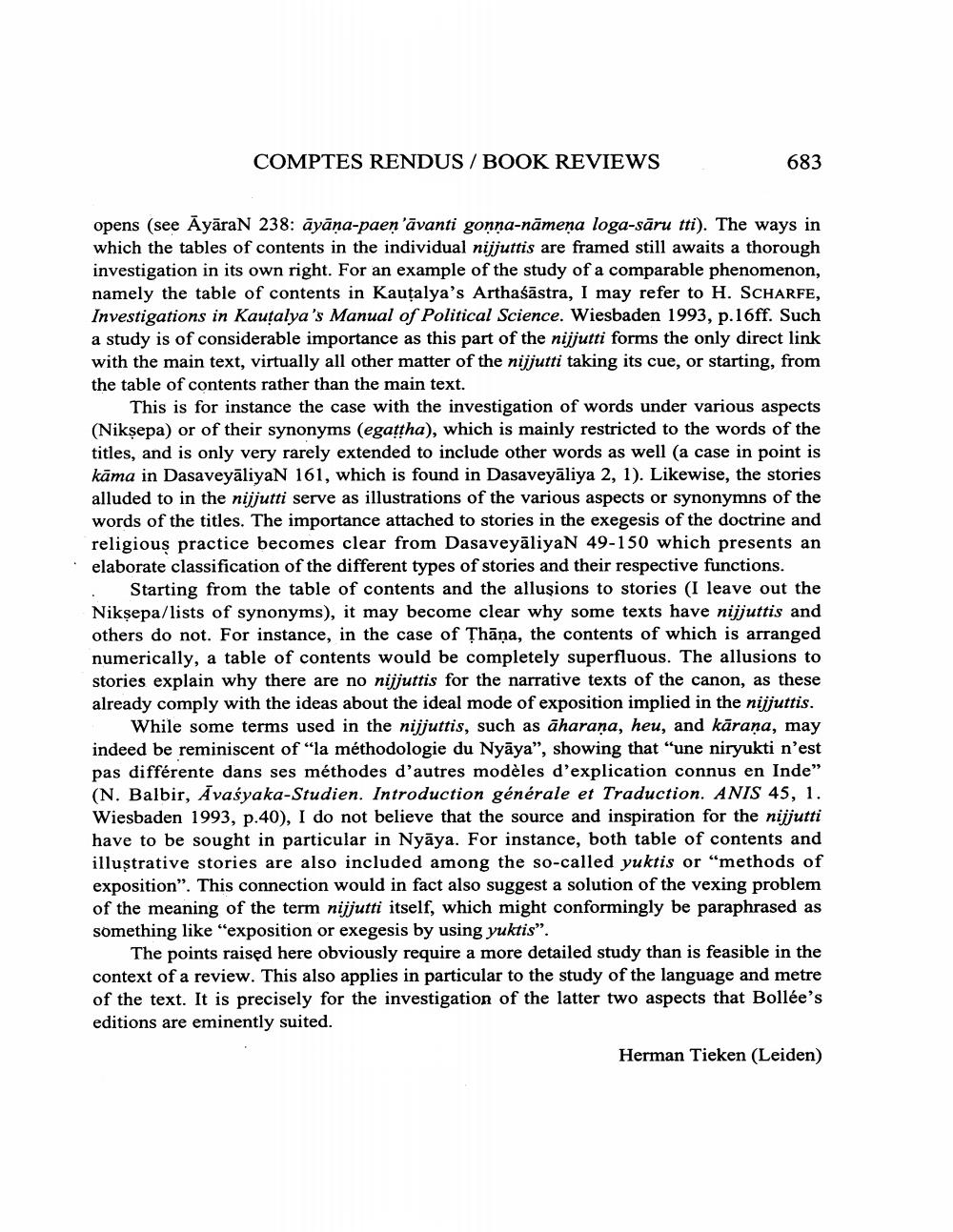Book Title: Buchbesprechungen Comptes Rendus Book Reviews Author(s): W B Bollee Publisher: W B Bollee View full book textPage 3
________________ COMPTES RENDUS / BOOK REVIEWS 683 opens (see AyāraN 238: āyāna-paen 'āvanti gonna-nāmena loga-sāru tti). The ways in which the tables of contents in the individual nijjuttis are framed still awaits a thorough investigation in its own right. For an example of the study of a comparable phenomenon, namely the table of contents in Kautalya's Arthaśāstra, I may refer to H. SCHARFE, Investigations in Kautalya's Manual of Political Science. Wiesbaden 1993, p. 16ff. Such a study is of considerable importance as this part of the nijjutti forms the only direct link with the main text, virtually all other matter of the nijjutti taking its cue, or starting, from the table of contents rather than the main text. This is for instance the case with the investigation of words under various aspects (Nikṣepa) or of their synonyms (egattha), which is mainly restricted to the words of the titles, and is only very rarely extended to include other words as well (a case in point is kāma in DasaveyāliyaN 161, which is found in Dasaveyāliya 2, 1). Likewise, the stories alluded to in the nijjutti serve as illustrations of the various aspects or synonymns of the words of the titles. The importance attached to stories in the exegesis of the doctrine and religious practice becomes clear from DasaveyāliyaN 49-150 which presents an elaborate classification of the different types of stories and their respective functions. . Starting from the table of contents and the allusions to stories (I leave out the Niksepa/lists of synonyms), it may become clear why some texts have nijjuttis and others do not. For instance, in the case of Thāņa, the contents of which is arranged numerically, a table of contents would be completely superfluous. The allusions to stories explain why there are no nijjuttis for the narrative texts of the canon, as these already comply with the ideas about the ideal mode of exposition implied in the nijjuttis. While some terms used in the nijjuttis, such as āharana, heu, and kārana, may indeed be reminiscent of “la méthodologie du Nyāya", showing that "une niryukti n'est pas différente dans ses méthodes d'autres modèles d'explication connus en Inde" (N. Balbir, Avaśyaka-Studien. Introduction générale et Traduction. ANIS 45, 1. Wiesbaden 1993, p.40), I do not believe that the source and inspiration for the nijjutti have to be sought in particular in Nyāya. For instance, both table of contents and illustrative stories are also included among the so-called yuktis or "methods of exposition". This connection would in fact also suggest a solution of the vexing problem of the meaning of the term nijjutti itself, which might conformingly be paraphrased as something like "exposition or exegesis by using yuktis". The points raised here obviously require a more detailed study than is feasible in the context of a review. This also applies in particular to the study of the language and metre of the text. It is precisely for the investigation of the latter two aspects that Bollée's editions are eminently suited. Herman Tieken (Leiden)Page Navigation
1 2 3 4
